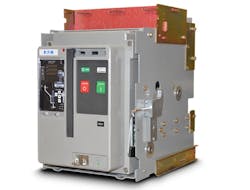Metromover Energy Makeover: Eaton Upgrading Electrical Systems for Miami-Dade's Automated Transit
In southern Florida, the Miami-Dade mass transit system gets more than 6.5 million riders to where they need to be around the metro area each year.
The county’s Transportation and Public Works is seeking the help of power management technology firm Eaton to help make that automated transit system work more energy efficiently. Under the plan, Eaton will help update Miami-Dade Metromover’s electrical system through digitalization and equipment upgrades.
The work is part of Miami-Dade County’s $153 million initiative to expand and upgrade reliability of its automated train network. The project should be completed by early 2025, according to Eaton.
“The future of transportation is considerably more electric, and we’re excited to enable the large-scale infrastructure projects needed to make it happen,” Igor Stamenkovic, senior vice president and general manager for Eaton’s Electrical Engineering Services & Systems division, said in a statement. “By modernizing the existing energy systems to work smarter, safer and more resiliently, we’re helping Miami-Dade Transportation & Public Works prepare for the future in a timely and cost-effective manner by avoiding complete infrastructure overhaul.”
Eaton is supplying the transit authority with low-voltage air replacement circuit breakers (pictured) and new motor control components to modernize 21 aging electrical substations. Next-gen digitalization will help the transit system and Eaton partner to better manage power use and provide insights into equipment health that could lead to more efficient and predictive maintenance going forward.
The financial cost of the project is supported by funding from the federal Infrastructure Investment and Jobs Act (IIJA). Miami-Dade Transit’s Metromover is a free-to-ride automated system serving downtown Miami, Brickell, Park West and the Arts and Entertainment District neighborhoods.
Eaton is working on energy transition projects across several fronts, including renewables, microgrids and energy efficiency. Last year, the company announced a new investment of $500 million in its North America equipment manufacturing and operations facilities to serve growing demand for electrical solutions in the utility, commercial and industrial markets.






